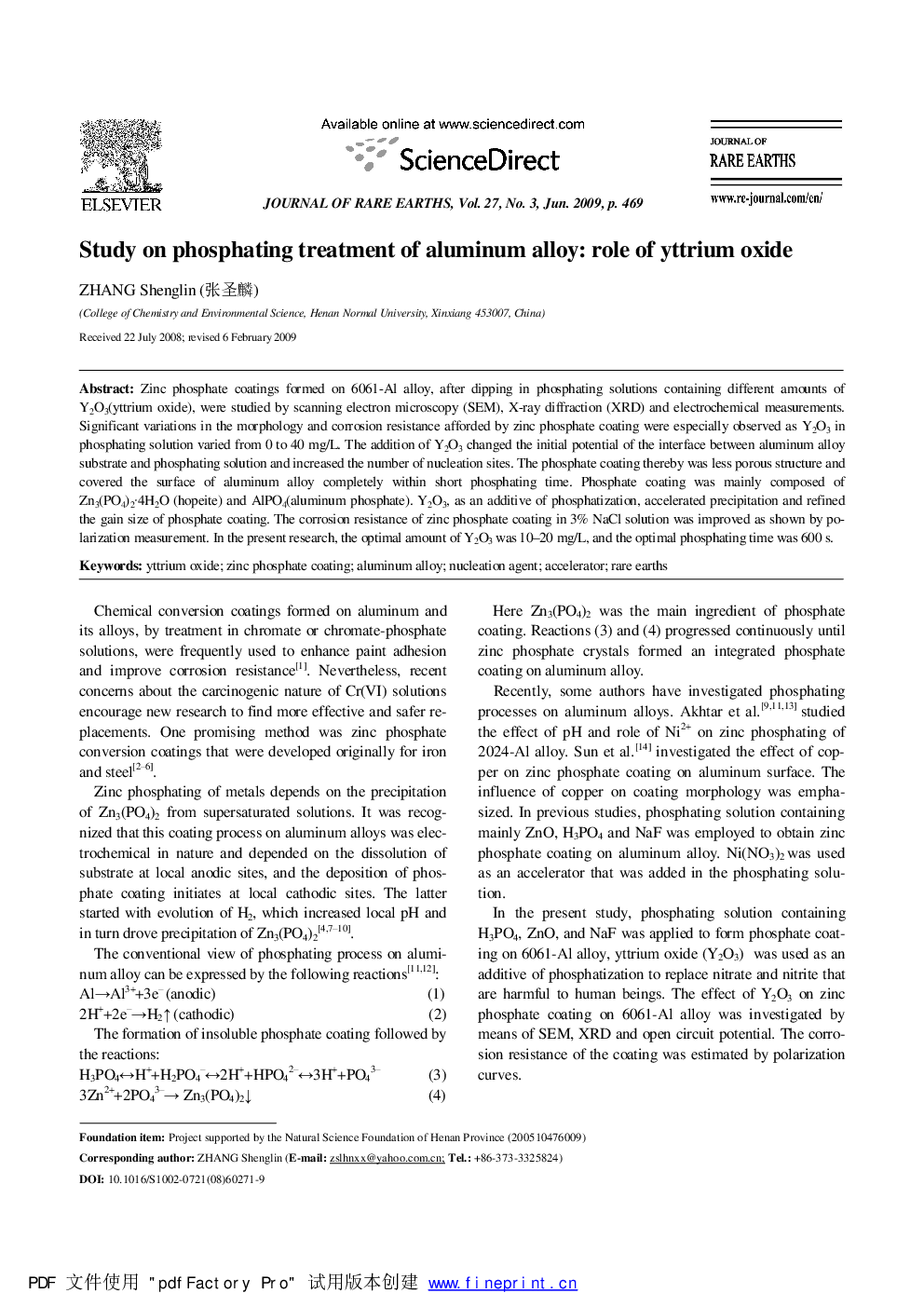| کد مقاله | کد نشریه | سال انتشار | مقاله انگلیسی | نسخه تمام متن |
|---|---|---|---|---|
| 1262038 | 971843 | 2009 | 5 صفحه PDF | دانلود رایگان |

Zinc phosphate coatings formed on 6061-Al alloy, after dipping in phosphating solutions containing different amounts of Y2O3(yttrium oxide), were studied by scanning electron microscopy (SEM), X-ray diffraction (XRD) and electrochemical measurements. Significant variations in the morphology and corrosion resistance afforded by zinc phosphate coating were especially observed as Y2O3 in phosphating solution varied from 0 to 40 mg/L. The addition of Y2O3 changed the initial potential of the interface between aluminum alloy substrate and phosphating solution and increased the number of nucleation sites. The phosphate coating thereby was less porous structure and covered the surface of aluminum alloy completely within short phosphating time. Phosphate coating was mainly composed of Zn3(PO4)2·4H2O (hopeite) and AlPO4(aluminum phosphate). Y2O3, as an additive of phosphatization, accelerated precipitation and refined the gain size of phosphate coating. The corrosion resistance of zinc phosphate coating in 3% NaCl solution was improved as shown by polarization measurement. In the present research, the optimal amount of Y2O3 was 10–20 mg/L, and the optimal phosphating time was 600 s.
Journal: Journal of Rare Earths - Volume 27, Issue 3, June 2009, Pages 469-473